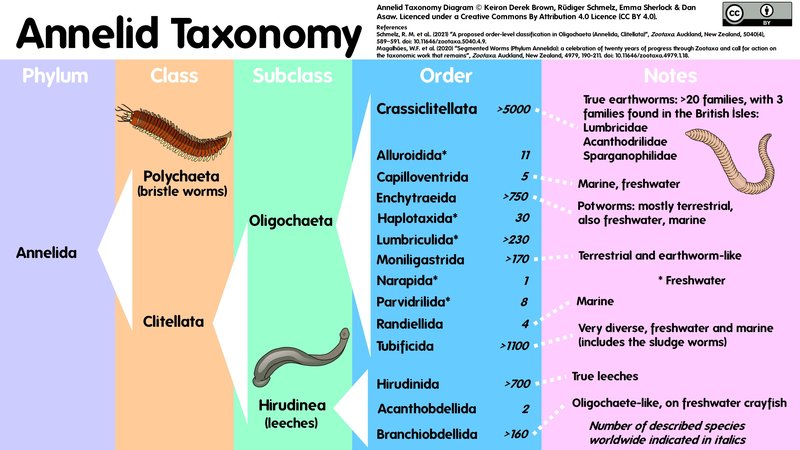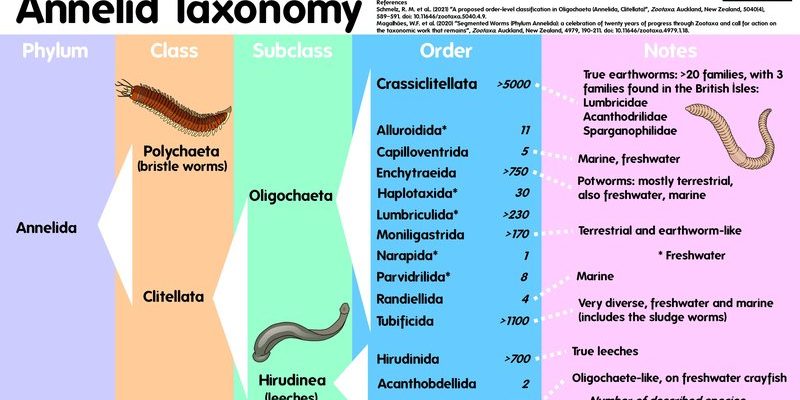
But what makes oligochaetes special compared to other worms? Understanding these differences can help us appreciate the diversity of life in our freshwater habitats. In this post, we’ll dive into the world of freshwater oligochaetes and compare them with similar worm species that share their environment. Let’s explore their characteristics, roles, and a few fun facts that might surprise you!
What Are Freshwater Oligochaetes?
Freshwater oligochaetes are a type of segmented worm found in various aquatic environments. They belong to the class Oligochaeta and are known for their important role in the ecosystem. These worms usually have few segments and possess a clitellum, a thickened, glandular section of their body, which plays a crucial role in reproduction.
These little fellas thrive in sediment-rich areas, where they help decompose organic matter. By doing this, they improve water quality and provide essential nutrients for plants and other organisms. Think of them as nature’s recyclers! Next time you see muddy water, know that oligochaetes are working hard to keep it clean.
Interestingly, oligochaetes can vary greatly in size. Some may be as tiny as a few millimeters, while others can grow up to several inches long. Their adaptability allows them to thrive in a range of conditions, from slow-moving streams to still ponds. Isn’t it fascinating how such tiny creatures can have such a big impact?
Characteristics of Freshwater Oligochaetes
When trying to identify oligochaetes, you might notice a few distinctive features. They typically have a soft, elongated body covered in a slimy secretion. This mucus helps them move through water and soil more easily. Have you ever tried to slide down a slippery slide? That’s kind of how they navigate their environment!
Their *segmented* bodies are another key characteristic. Each segment can contain muscles that help the worm move. This segmental structure allows for a smooth, worm-like motion, making them quite effective diggers. Plus, oligochaetes lack a defined head, instead having a more uniform body shape, which can make them tricky to identify at first glance.
Another interesting aspect is their feedings habits. Oligochaetes are mostly detritivores, meaning they consume dead organic matter and detritus. By breaking down this material, they play a vital role in nutrient cycling in aquatic ecosystems. This process is essential for maintaining healthy waterways. Without them, we’d see a buildup of waste and decreased water quality.
Similar Worm Species in Freshwater Habitats
While oligochaetes are fascinating, they aren’t the only worms you’ll find in freshwater habitats. Other species, like hirudineans (leeches) and nematodes, also share these environments. Each has its own set of characteristics that makes it unique.
Hirudineans, for example, are often more recognizable due to their flat, elongated bodies. Unlike oligochaetes, which are mostly harmless, some leeches can be a bit intimidating because they can suck blood. However, not all leeches are parasitic; many are actually scavengers that consume small organic particles.
On the other hand, nematodes, or roundworms, are microscopic and often go unnoticed by most people. They play a crucial role in soil and water ecosystems, helping with decomposition and nutrient cycling. Their tiny size means they often go overlooked, but they are equally important in ensuring the health of their habitats.
So, while oligochaetes are the stars of this aquatic show, remember that their counterparts are just as vital in maintaining a balanced ecosystem.
Comparing Diets: What Do They Eat?
Every worm has its own diet. As mentioned, oligochaetes primarily feast on organic debris, but how do they compare with leeches and nematodes? Understanding their diets can give us insights into their roles in the ecosystem.
Freshwater oligochaetes graze on decomposing plant material, bacteria, and other small particles in the sediment, helping break down waste and recycle nutrients. Their voracious appetites aid in keeping waterways clean.
Hirudineans, however, have a more varied diet. While some are blood-sucking parasites, others are scavengers. For instance, some leeches will feed on dying fish or decaying matter. This adaptability allows them to survive in a range of habitats where food sources might vary.
Lastly, nematodes tend to be very diverse in their diets as well. Some are predators, others are parasites, and many feed on bacteria or organic material. This makes them incredibly versatile and essential for breaking down complex organic matter in various ecosystems.
Ecological Roles: Why They Matter
The roles these worms play in their respective ecosystems are crucial. Freshwater oligochaetes, hirudineans, and nematodes all contribute to the decomposition of organic material, but they do it in different ways.
Oligochaetes help recycle nutrients back into the ecosystem. By breaking down waste, they promote healthier water and soil conditions, allowing plants and other organisms to thrive. Their activity increases water aeration and reduces muck buildup in ponds and streams.
Hirudineans, with their unique feeding habits, also contribute to the balance of the ecosystem. By consuming sick or dead animals, they help control populations and maintain the health of aquatic environments. Plus, their presence can indicate a good quality of water, serving as biological indicators for ecologists.
Nematodes, although tiny, are fundamental players in the food web. They break down complex substances, making nutrients available to larger organisms. Their role is essential in nutrient cycling, which enriches the soil and water.
How to Spot Freshwater Oligochaetes
You might be wondering, “How can I spot these fascinating oligochaetes?” Luckily, they can often be seen with the naked eye, especially in sediment-rich environments. If you’re near a pond or stream, take a closer look at the muddy bottom.
Oligochaetes tend to be a bit darker than the surrounding sediment, often brown or greenish in color. If you’re really keen, you might spot them while digging in the mud. Look for small, wriggling worms that move smoothly—if you pluck one from the mud, it might feel a bit slimy.
Sometimes they can be found in large numbers, creating a noticeable movement as they churn through the substrate. This is a great sign that the ecosystem is healthy and thriving.
Final Thoughts on Freshwater Oligochaetes and Their Wormy Neighbors
In conclusion, freshwater oligochaetes deserve a spotlight in the conversation about aquatic ecosystems. They work tirelessly behind the scenes, helping decompose organic matter and maintain water quality. But they aren’t alone—leeches and nematodes play equally important roles in this community.
By understanding and appreciating the differences among these worm species, we gain deeper insights into the delicate balance of our freshwater habitats. The next time you stroll by a pond, remember that beneath the surface, a busy world of oligochaetes and their wormy friends is working hard to keep nature in check. So, how about a little gratitude for these tiny but mighty creatures? They truly make a difference!

